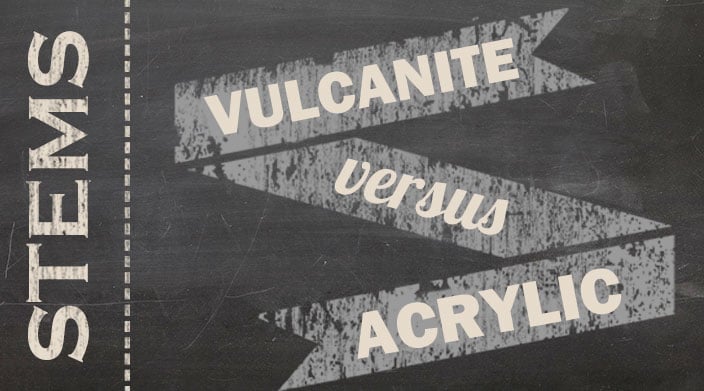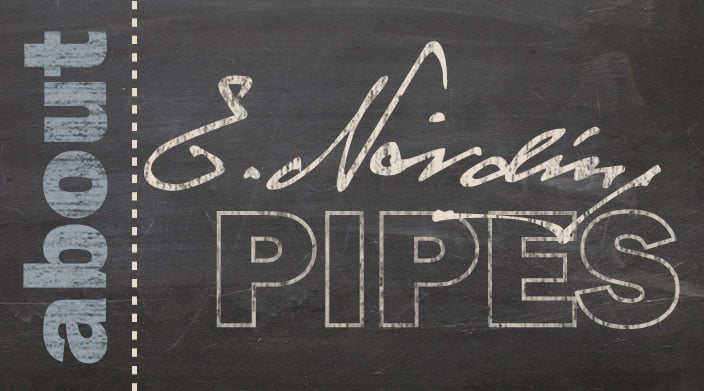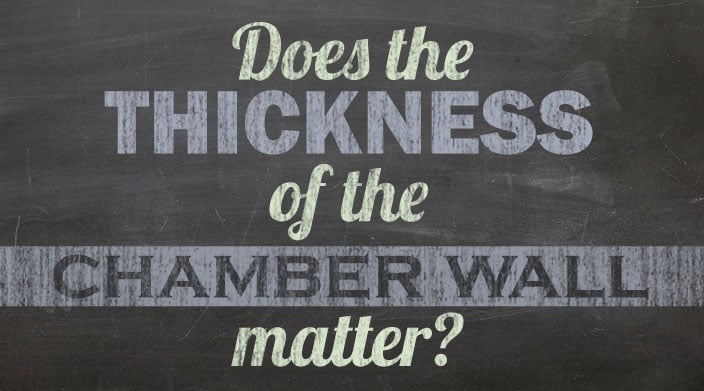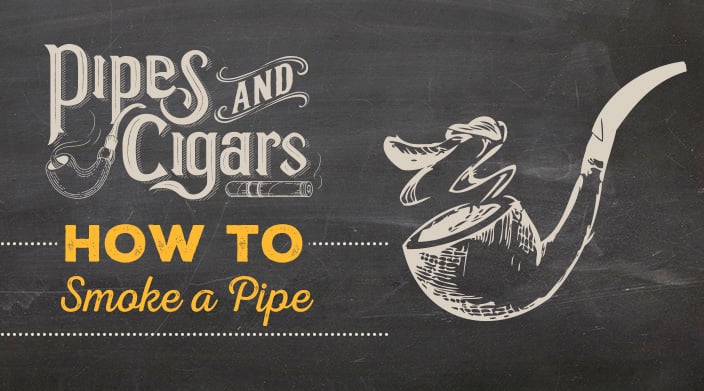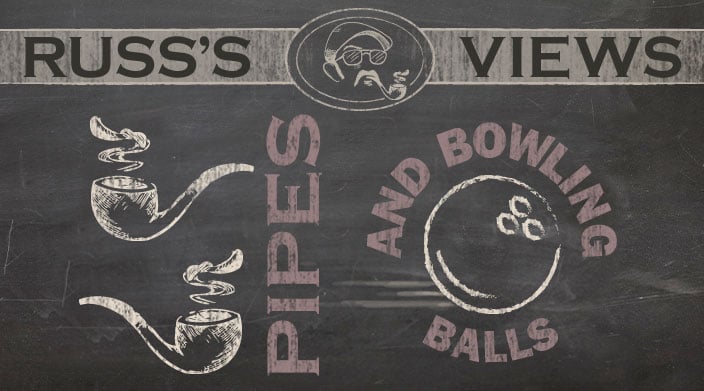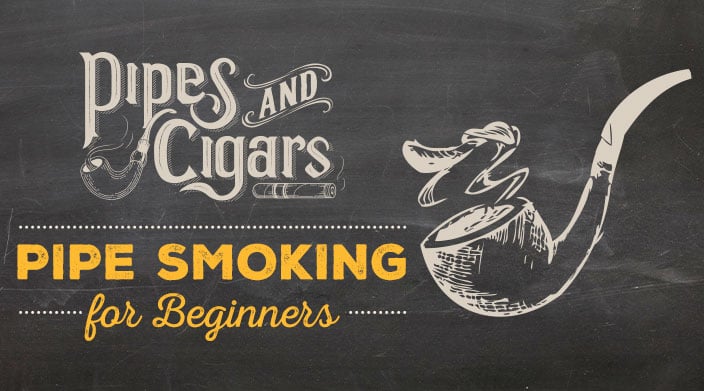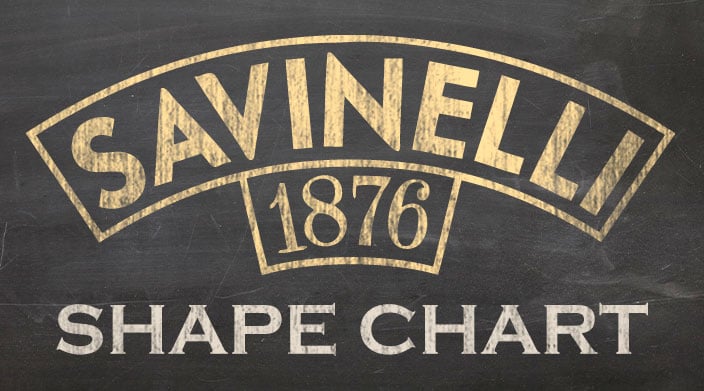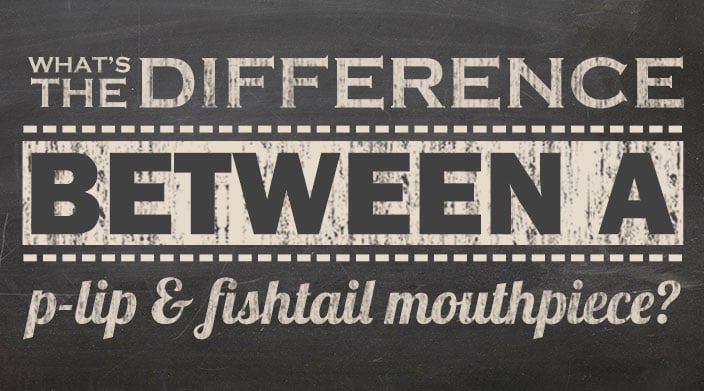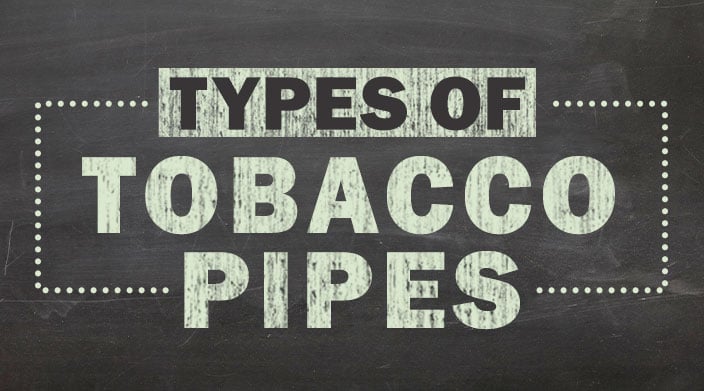Although they can be made of several varied materials, pipe stems, today, are primarily made of two types - vulcanite pipe stems (AKA - Ebonite or hard rubber) and acrylic pipe stems (AKA Lucite or methacrylate). Here we'll address the differences in the materials, and which one is best suited to your needs.
The first question that most people ask is - which material is best for a pipe stem? There's no definitive answer to that query, but we will examine the advantages and disadvantages of both, to help you make that determination for yourself. Let's look at each type to see which suits you.
VULCANITE PIPE STEMS
Vulcanite pipe stems are sometimes referred to as Ebonite (at one time a trademark for hard rubber). This is vulcanized rubber, made by adding sulfur to rubber and heating it. The resulting material is hard to the touch, but still maintains a little flexibility. It can be a bit brittle, so some caution needs to be exercised to avoid breakage. Although usually black in color, it can now be made in a variety of hues. The primary advantage of vulcanite is that it is slightly soft, allowing the teeth to more easily grip a stem made of it. This also means that tooth marks can be left behind, so, if appearances are your most important concern, you may want to go in a different direction. Another area of concern is oxidation. Exposure to acids (from the smoker's saliva) and ultraviolet light can cause vulcanite to become hazy in color, and taste bad. This is because the sulfur will come to the surface. This can be remedied, but unless caught early, it will require professional help. At the first sign of oxidation, the use of products like Decatur Pipe Shield Haze Away and Decatur Pipe Shield Shine-Brite can alleviate the problem. But, once the sulfur can be tasted, the stem will need to be sanded or buffed and re-polished to return it to its original condition. To properly recondition an oxidized vulcanite stem requires specialized equipment (a low-speed buffer and a variety of polishing compounds). For that reason, it's best left to a pipe repair person or pipe maker. That said, vulcanite stems are generally accepted to be more comfortable since they have a little "give" when clamped down on.
LUCITE PIPE STEMS (ACRYLIC)
Acrylic pipe stems or Lucite pipe stems (called methacrylate in Europe), on the other hand, can be made in any color imaginable. Swirled patterns can be made, and inclusions such as pearlizing powders and even glitter can be added for effect. The downsides to this material are that it is hard and slick (making getting a grip on the stems more difficult), it can be brittle, especially at the tenon, and it also can't be made into a very thin stem, mainly because it would be easy to bite through. One great advantage, however, is that acrylic stems won't oxidize, eliminating a lot of maintenance. Just a quick wipe with a soft cloth will make them like new.
If you break or damage either type of stem, the only answer is to have a new stem made by a repair shop since universal replacement pipe stems aren't available. The tenon size and the diameter of the stem where it meets the shank can vary widely, so a new stem will need to be fitted to the individual pipe.
To sum up - there really isn't a clear answer to which stem material is superior. Which one is best depends on your habits and usage. For people who prefer to hold the pipe in their hand while not puffing, the stem material has little impact, but for those who clench (hold the pipe in their mouth while smoking), vulcanite is normally perceived as better since it's easier on the teeth. For anyone who is extremely fussy about the appearance of their stems, acrylic stems are the obvious choice as they clean up so much easier. Also, if you really clamp down on a stem and are prone to biting through them, acrylic stems afford more durability. Ultimately, you should try different types of stems to find what works best for your use. Despite all the information you can gather, you are the final arbiter as to which kind of stem suits you best.




